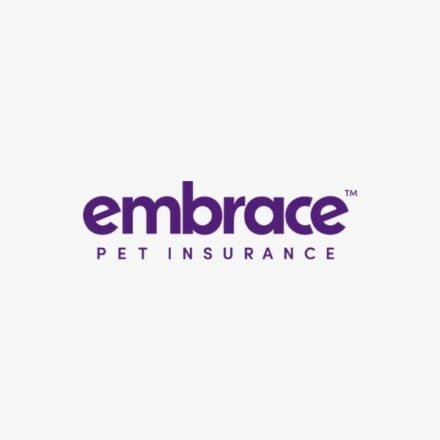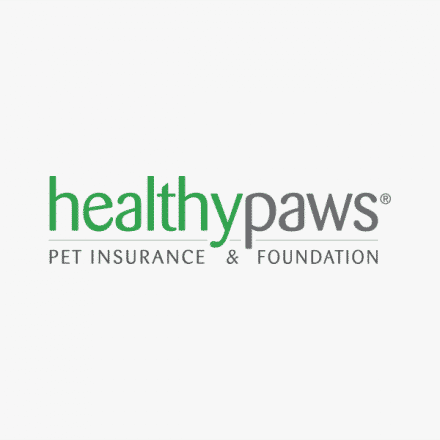The Cane Corso is an Italian breed of Mastiff that roughly translates to “bodyguard” in Latin. They’re natural protectors, loyal, and intelligent. The best insurance policy for a Cane Corso may not match that of a smaller dog breed. This is why we’ve dedicated this insurance guide to Cani Corso.
This breed ranks 21st among the most popular dogs. But, each dog is an individual, and your budget isn’t the same as your neighbor’s. So we’ve compiled a list of health insurance considerations to help you find the best fit for your unique needs.
At 23-28 inches tall and weighing 85-110 pounds, this breed is just as easily susceptible to accidents and illnesses as any other canine. And like all other purebreds, they are prone to more health concerns than most mixed breeds, making pet insurance an excellent investment consideration.
At A Glance

Best
Overall

Best For
Older Dogs

Best For Vet Direct Pay
Note: Clicking the above links take you to each company’s website to learn more and get a quote. If you make a purchase, we earn a commission at no additional cost to you.
Is Pet Insurance Worth It?
The short answer is yes. A survey by Liberty Mutual Insurance states that 63% of pet owners couldn’t afford unexpected medical care for their pets. Not only does pet insurance allow you to choose the best medical treatment for your pet, but it also provides stability to your finances.
The key thing to remember is that you need to sign up for pet insurance before an emergency arises. You cannot count on coverage for your Cane Corso’s pre-diagnosed health issues. So it’s crucial to get your dog covered as soon as possible.
Common Health Issues In Cani Corsi

Cani Corsi generally live 10-12 years. However, the health issues below are a few common ones for Cani Corsi. These details can give you an idea of what to look for regarding symptoms and insurance coverage.
Bone & Joint Issues
Cani Corsi experience rapid growth within the first year of their lives, which leaves them susceptible to developing bone and joint issues. It’s a good idea to not over-exert them during their young years, so they aren’t more likely to injure themselves.
Hip Dysplasia
Hip dysplasia is among the most common health issues in large breed dogs, including the Cane Corso. The American College of Veterinary Surgeons (ACVS) states that genetics plays the most significant factor in joint dysplasia and other joint problems. Be sure to work with a breeder who provides you with healthy hip and elbow scores.
Surgery is often needed to improve the quality of your dog’s life. And this procedure ranges from $1,700 to $4,500+, depending on the type of surgery required.
Entropion
This breed is at risk of entropion, which is an eye disease where the lower or upper eyelids roll inward. Dogs may experience pain and swelling of the eyes because of the irritation caused by the eyelashes hitting the cornea. It can also lead to ulcers on the cornea, which are extremely painful and can cause vision impairment or loss of the eye.
Surgery for entropion ranges in cost from $1,100 to $2,000. It is based on the breed, severity of the eye condition, and the number of eyelids involved.
Bloat
Canine bloat is also known as gastric dilation-volvulus or gastric torsion. This life-threatening illness occurs when a dog eats too much or too fast. A buildup of gasses in the stomach causes it to blow up like a balloon and twist, causing the blood flow to the stomach to be cut off. If left untreated, it can result in death within hours.
Because bloat requires immediate medical treatment, your vet bill can quickly reach $3,000 or more. Your dog’s medical care may include an emergency vet visit, shock treatment, sedation, surgery, overnight stay, follow-up exams, and more.
Considerations When Choosing An Insurer

Age Restrictions & Waiting Periods
Most pet insurance companies have a minimum age requirement (typically between six and eight weeks old) before allowing you to enroll your pet. And some companies cap the age at which you can sign up an older dog (14 years old is the most common, although it’s only a few companies). Additionally, some companies may exclude specific conditions from coverage if your pup is above a certain age (e.g., hip dysplasia, cruciate ligament surgery, and orthopedic disorders).
All providers have waiting periods, which are short periods at the beginning of a new policy until your pet’s condition becomes eligible for reimbursement. Keep in mind that any pre-existing conditions, accidents, or illnesses diagnosed or showing symptoms during the waiting period are excluded from coverage. The average waiting period for illnesses is 14 days and for accidents is less than five days.
Coverage Type
There are two types of insurance coverage to choose from:
- Accident-Only – These policies offer coverage for accidents (e.g., torn ligaments, broken bones, etc.), so basically any sudden physical injury. Accident-only plans are typically more affordable than accident and illness policies. This can be a reasonable option for a pet with many pre-existing conditions.
- Accident and Illness – These policies are the most popular because they cover both accidents and illnesses (i.e., cancer, arthritis, allergies, etc.), including most unexpected medical expenses. Because no provider covers pre-existing conditions, it’s crucial to sign your pet up for coverage as early as possible.
Some companies also offer a wellness plan (aka preventative care plan) during the enrollment process. This commonly covers routine vet expenses (i.e., annual exams, spay/neuter procedures, vaccinations, etc.) but varies by provider. It’s typically available as an add-on to an accident-only or accident and illness policy, but some companies allow you to purchase it without an insurance policy. This add-on coverage isn’t technically an insurance product.
To find the best option for your Cane Corso, you need to consider what type of coverage you need and your budget.
Premium: Deductible, Reimbursement & Payout Options
The fee you pay for your Cane Corso’s pet insurance coverage is the premium usually paid monthly or annually. Monthly payments often add transaction fees, so if you can pay annually, it can save you a little money.
According to NAPHIA (North American Pet Health Insurance Association), the average monthly premium for an accident and illness insurance policy in the U.S. in 2022 was $53.34 for dogs. Of course, this varies for every dog and situation, including yours, so be sure to get multiple quotes from top-rated companies.
The premium is based on several factors: breed (or mix), location, age, gender, pre-existing conditions, deductible, reimbursement percentage, and payout. The beginning of the list is self-explanatory, you have a Cane Corso, and you know your zip code, your dog’s age (or best guess), gender, and medical history. But what is a deductible, reimbursement, and payout?
- Deductible – The money you have to pay before your policy begins to reimburse you. This is typically reset each policy period (annually). However, some companies have per-incident deductibles, so you must pay this amount each time your dog suffers a new condition. Each company may have its own spin on this, so be sure to understand your policy because annual vs. per-incident deductibles can impact the amount of money you’re expected to pay.
- Reimbursement – The percentage of a claim that you’re eligible for repayment by the company after you’ve paid your coinsurance. The most popular reimbursement options are 70%, 80%, and 90%, but some companies offer other options or restricted options based on the dog’s age or location.
- Payout – The maximum amount a provider will reimburse during the policy period. Lower payout limits mean you may be responsible for more costs if your pet has expensive vet treatment.
Many companies allow you to customize your plan to fit your budget. For example, a higher deductible and reimbursement percentage paired with a lower payout will lower your premium. However, it’s crucial to find a balance between what your budget allows and the worst-case scenario if your Cane Corso’s health takes a turn for the worst and you have several expensive vet bills to pay.
Exclusions
Exclusions refer to the conditions not covered by your policy. This can include pre-existing conditions, hereditary disorders, musculoskeletal disorders, specific dental treatment, and more.
Possibly the most significant concern regarding Cani Corsi is that some companies may exclude inherited and breed-related conditions. Because Cani Corsi have an increased risk for brachycephalic syndrome, you’ll want to ensure you understand any additional restrictions for it. For these reasons, it’s crucial that you thoroughly read and understand your policy.
Who Offers The Best Policy?
Below are our top pet insurance picks for Cani Corsi based on their breed-specific needs. And, once you are ready, we’ve made a free quote form that provides customized policy quotes from top pet insurance companies when you fill in your pet’s details. By entering your pet’s specific characteristics, you can get a better understanding of the coverage needed.
Best Overall Pet Insurance
Pets Best

- No age limits or restrictions
- Thorough coverage
- Some of the lowest prices in the industry
- Offers an Accident-only plan
Pets Best may be the best pet insurance for your Cane Corso because of its lower pricing on average, and it has no maximum age limits for enrollment. Pets Best also has few exclusions compared to other providers, including coverage for behavioral therapies and optional wellness care.
Best Pet Insurance For Older Dogs
Figo

- Excellent value for money
- Offers options for 100% reimbursement and unlimited annual payouts
- Diminishing deductible decreases by $50 each year the policyholder is claim-free until it’s $0
- Coverage includes age and weight-related concerns and hereditary and chronic conditions
Best Insurance For Vet Direct Pay
Trupanion

- One of the only companies with no bilateral exclusions
- Claims can be paid in less than 5 minutes via Trupanion Express
- 90% reimbursement and unlimited payouts for all plans
- Offers enrollment from birth
Additional Options We Recommend
Embrace

- Premium reduces by $50 per year if no claims are made
- Covers curable pre-existing conditions, dependent on evaluation
- Exam fees included in all policies
- Offers coverage for behavioral therapy and training
- Dental treatment included
Healthy Paws

- Unlimited annual and lifetime payouts for all plans
- Fastest claim payout, on average, compared to others
- Excellent value and competitive price
- High customer satisfaction ratings
Lemonade

- AI-driven claims process
- Not available in every U.S. state
- Ability to bundle with homeowners or renters insurance policies
- Optional wellness coverage
How To Save Money
Some Cane Corso parents can save money on insurance policies if the following circumstances are met.
Pay Annually
Most insurance companies offer two ways of paying your premiums, either monthly or annually. In many cases, transaction fees are added to your bill if you choose the monthly payment option. Therefore, you can minimize or avoid these altogether if you pay your premium annually.
Multi-Pet Discount
Many pet insurers offer multi-pet discounts for pet owners who take out several policies for their household’s dogs and cats. You could get up to a 10% discount on each pet’s insurance, amounting to significant savings. Some companies only offer multi-pet discounts on additional pets (not the first), so be sure to clarify this point before enrolling in a new policy.
Final Thoughts
As you can see, investing in insurance for your Cane Corso is frequently worthwhile. The premium often deters pet parents. But when you consider the costs associated with common non-routine vet bills for the breed, you realize it can be a more budget-friendly option. Not to mention the peace of mind of knowing that you’ll never be faced with choosing between your wallet and your best friend’s health or life.
Remember to read the fine print to understand the coverage and limitations before you sign up, no matter which policy you are considering. If you’re unsure about something or have questions, give the pet insurance company a call or speak with your vet.





